Oil fuels the world. Despite the promise of other energy sources, it's vital to the world economy, and that means it needs to be moved around the world. As usual, the best way of doing so is by sea. Oil forms a major part of the global maritime trade, and is responsible for the largest ships ever built.
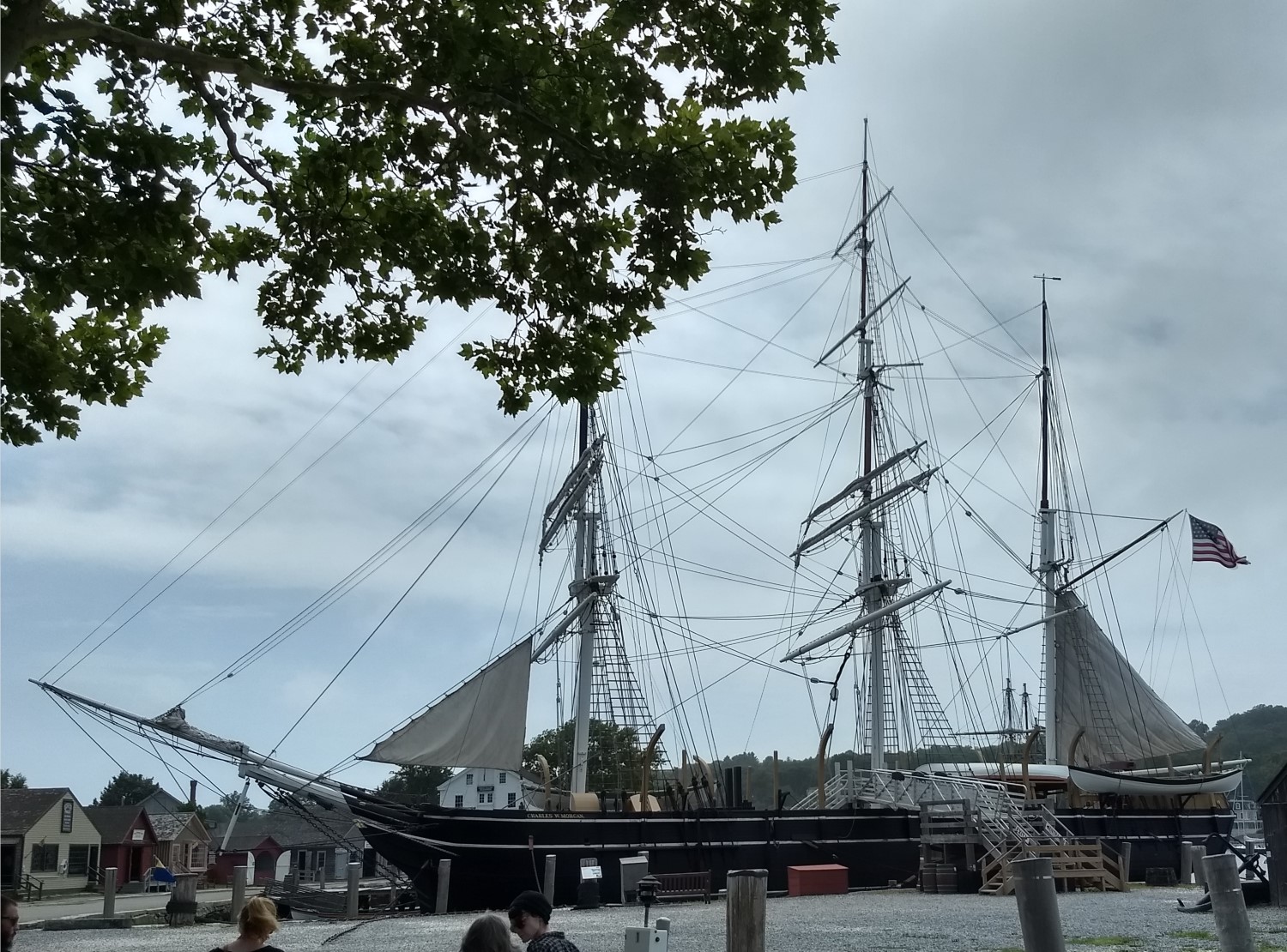
Whaling ship Charles W. Morgan at Mystic Seaport
Liquid cargo has long been transported by sea, although the usual method was to load it in barrels and transport it as break-bulk cargo. This was inefficient, and not just in the traditional way that break-bulk cargo was. Barrels didn't stack very well, and they had a tendency to leak, usually losing 10% or more of their cargo during a typical voyage. Despite this, they were used exclusively in the first maritime oil trade, that of whale oil. Demand for this product soared in the first half of the 19th century, driven by the development of kerosene lamps, and the collapse of the whale population drove a search for other sources of lighting oil. One of these was petroleum, which began to take off in the 1850s, particularly in Pennsylvania. By the late 1860s, oil was America's second-largest export, and various parties began to experiment with better ways to carry oil across the Atlantic.
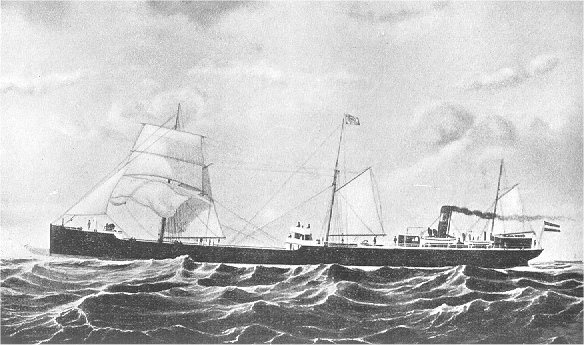
Gluckauf
The first dedicated tankers were built in 1863, and were propelled entirely by sails. They were probably never used for bulk oil, as there was still considerable skepticism about the practice on the part of authorities and dockworkers alike. This resistance continued through much of the 1870s, with oil often going overseas in cases, already packaged for distribution. The first large-scale use of tankers as we know them today was instead in Russia, where barges and smaller vessels carried oil from Baku throughout Russia's extensive network of internal waterways, beginning in the early 1870s. By the end of the decade, the economic logic on the high seas was becoming overwhelming, and many shipowners began to convert existing general cargo ships, both steam and sail, by fitting tanks in their holds. In 1886, a Standard Oil subsidiary built the Gluckauf, an important step forward in tanker design. It was the first tanker to carry oil in the entire hold, instead of in smaller tanks inside the hold. This was much more efficient than separate tanks, although it increased the danger of the liquid cargo shifting. Eventually, baffles became standard to reduce this free surface effect.
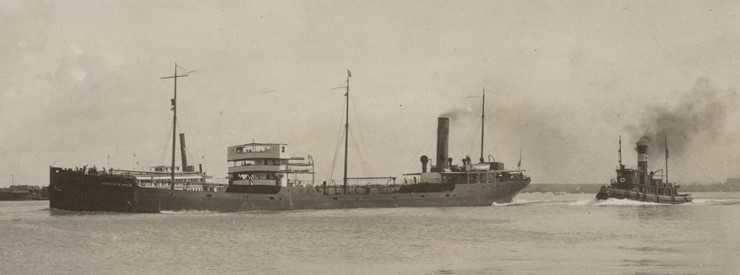
Tanker Herbert G Wylie, 1912
The early tankers were quite dangerous. Besides the free surface effect, the flammable nature of their cargo required new precautions, learned in burning ships. New structural methods had to be worked out, too, culminating in a new system of longitudinal framing developed by British naval architect Joseph Isherwood in 1908, which reduced cost and increased strength. The oil trade grew rapidly during the years before the first world war, driven in part by the adoption of oil fuel at sea, as did the tankers themselves, growing from 2-3,000 tons in the 1880s to as much as 18,000 tons in 1914.1 During this period, they assumed a standard form, with engines aft to give a long, unobstructed cargo hold, and the crew quarters and bridge amidships.
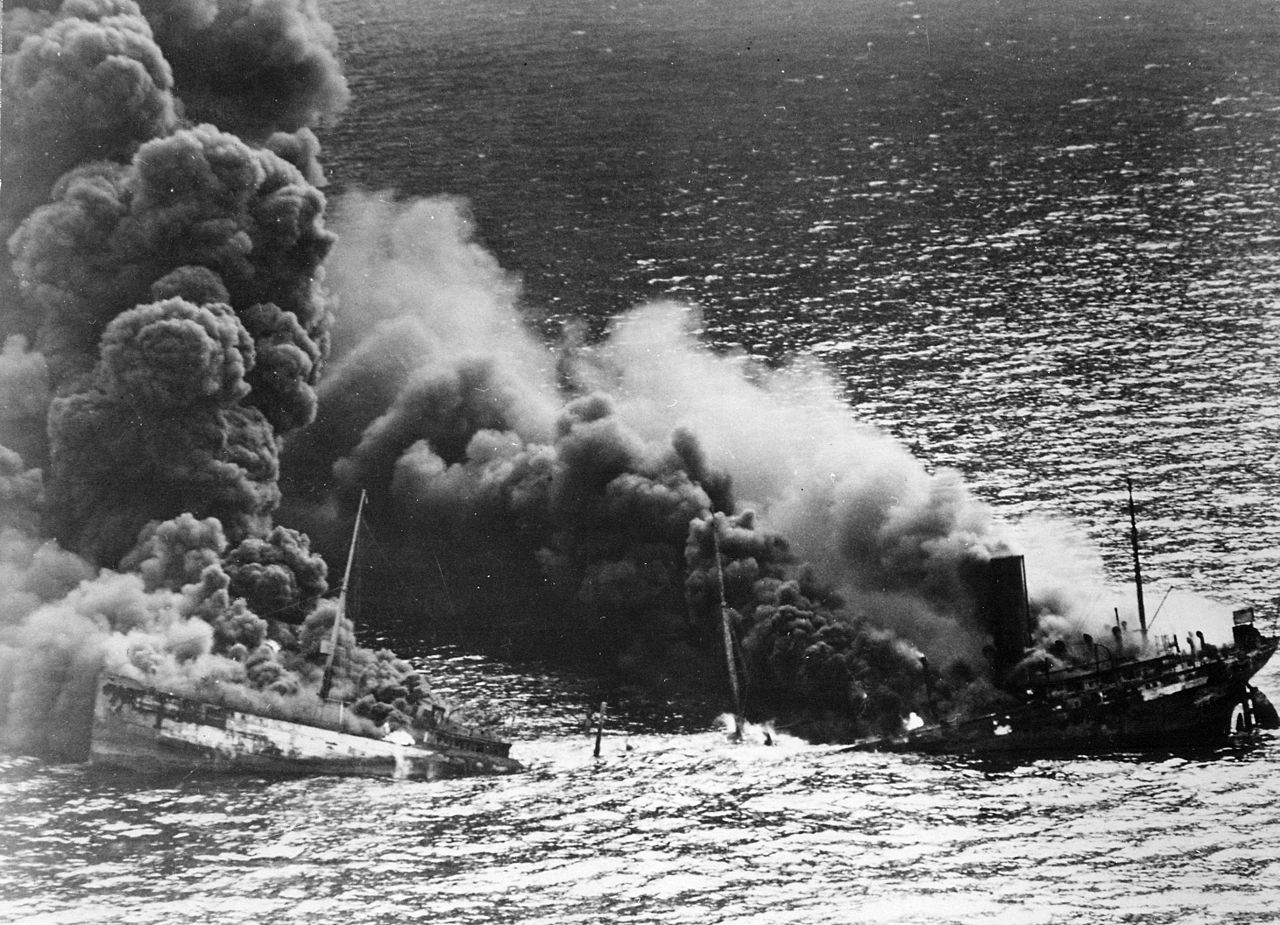
Tanker Dixie Arrow burns after being torpedoed by a U-boat
Both world wars saw heavy losses of tankers, which were among the most dangerous ships to sail on due to their flammable cargo. American submarines in the Pacific made a particular point of targeting Japanese tankers, helping to shut down their war economy, while on the home front, US shipyards built 533 T2 tankers, each capable of carrying around 16,000 tons of oil at a speed of 15-16 kts. Other tanker varieties were also built, but in smaller numbers, and many were pressed into service as naval oilers.
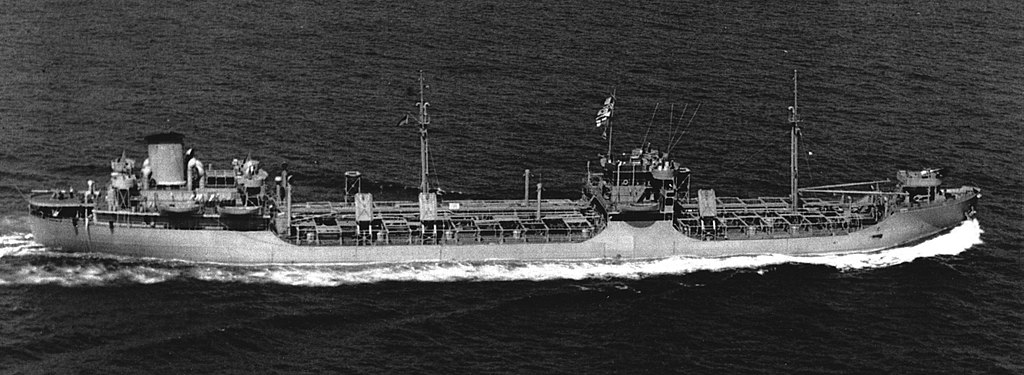
T2 Tanker Hat Creek
Up through WWII, most oil refineries were located close to the fields, and the tankers carried refined products like gasoline or heating oil to market. Improved refining technology and instability in oil-producing regions led the oil companies to shift refining capacity close to their home markets, and the long-distance trade shifted to crude, with distribution of the end products using a mix of pipelines, trucks, and smaller "product tankers". These had more complex piping systems than the crude carriers, allowing them to handle multiple cargoes without cross-contamination, and to load and unload cargo quickly on their shorter routes.
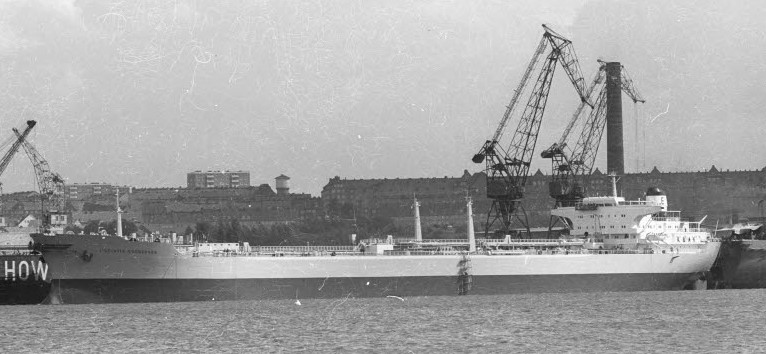
Tanker Liselotte Essberger, a 60s design
Until the mid-50s, the limits on crude carrier sizes were essentially set by the Suez Canal, which connected the main producing areas in the Middle East with the main customers in Europe. In 1956, the Suez Crisis closed the canal, and shipowners quickly responded by building bigger ships to take advantage of the economies of scale they offered. Even after the Canal reopened in 1957, tankers continued to grow, offsetting the much longer voyage around the Cape of Good Hope2 with vastly cheaper per-ton costs. In 1959, the tanker Universe Apollo breached the 100,000 ton barrier, doubling the tanker size record in only four years. The 50s also saw a visual change take place, as more ships had their bridge moved aft over the engines, allowing the main hull to be completely unobstructed.
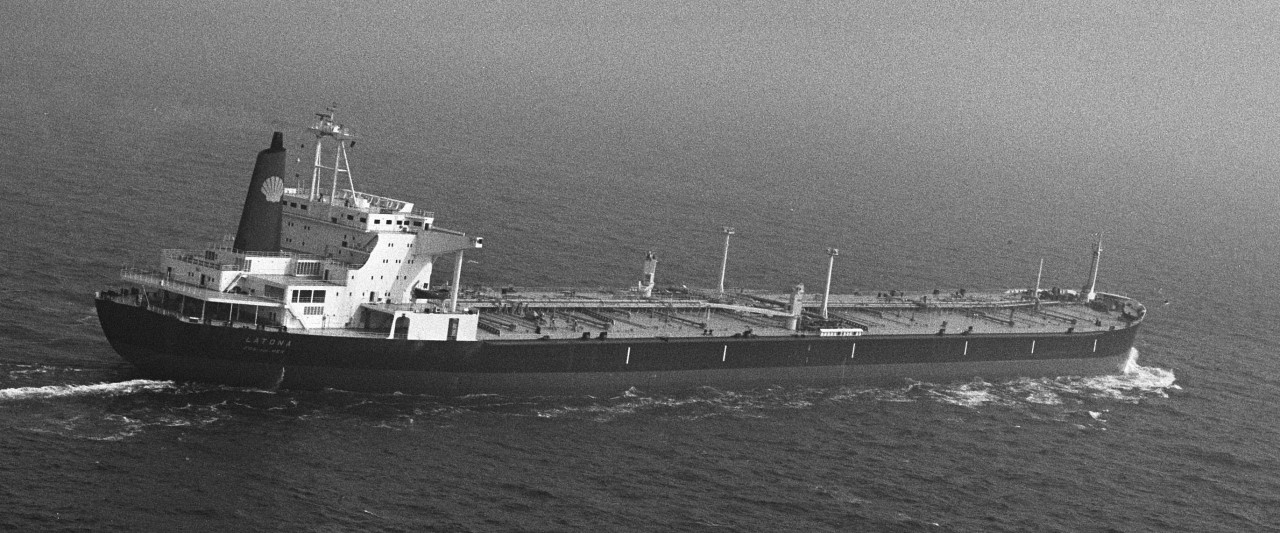
VLCC Latona
The growth barely slowed in the 1960s. Idemitsu Maru, the first tanker to pass the 200,000 ton mark, entered service in 1966, heralding the arrival of the Very Large Crude Carrier (VLCC). Suez had been periodically deepened to let larger ships pass through, and many ships would transit southbound in ballast and northbound around the Cape. Idemitsu Maru was one of a flood of tankers that arrived on the market in the mid-60s, just in time for the Six-Day War of 1967. This saw the Canal closed again, and tanker rates skyrocketed. 1967 also saw another major event in the history of the tanker, when the Liberian-registered Torey Canyon ran aground off Cornwall in England, spilling over 25 million gallons of crude. It was the first great at-sea oil spill, and notable for the attempts by the British government to mitigate the damage by bombing the ship and using napalm to burn off the oil.
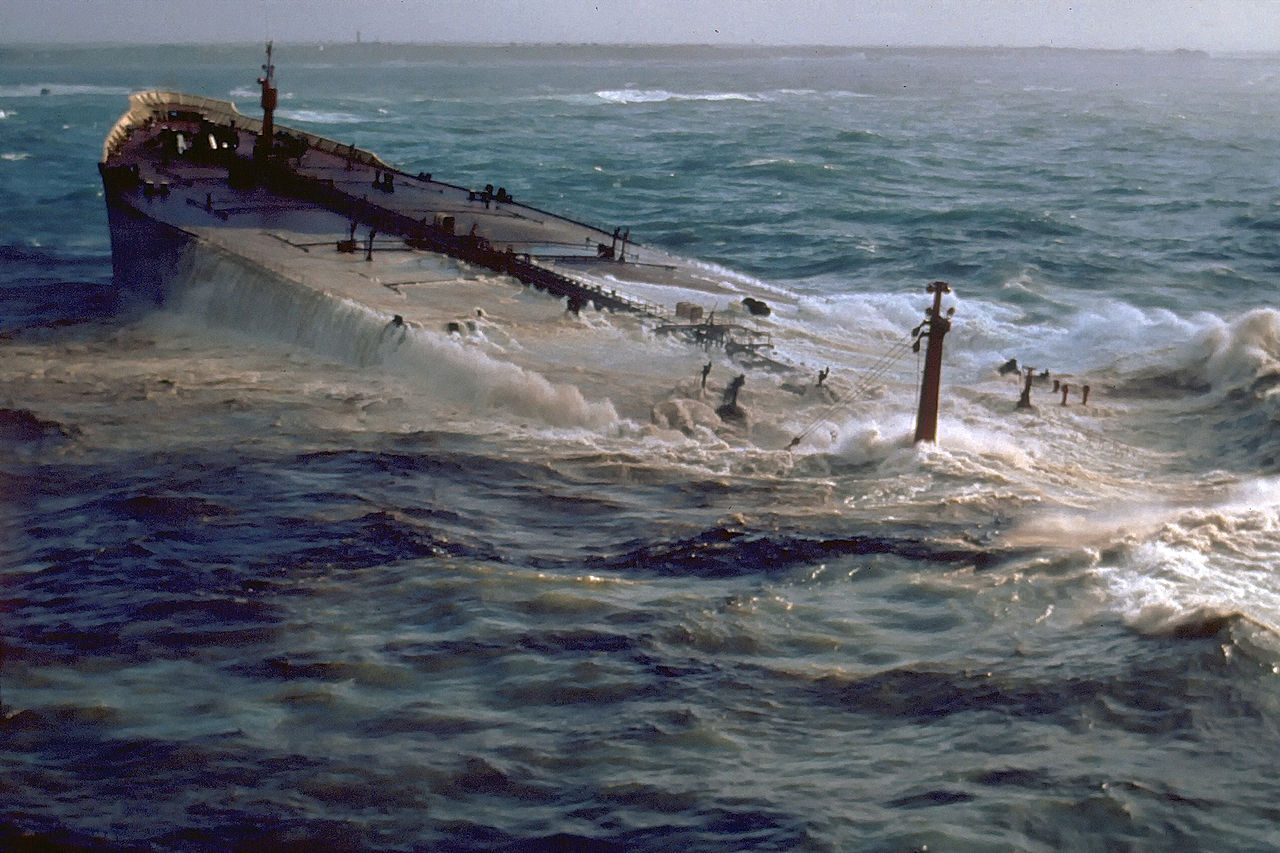
A major spill from a sunken tanker
Even with the economies of scale they provided, VLCCs took some time to gain wide adoption. They were massively larger than any previous ship, and often couldn't enter existing harbors when loaded due to excessive draft. Eventually, dredging work was carried out, but in the meantime, solutions had to be found. One method was to moor the ship to a buoy in deeper water and pump the oil to shore through a pipeline. Another was to simply bring a smaller tanker alongside near the destination and pump over enough oil to allow the VLCC to enter port. This was not a popular or safe procedure, but there were no major spills during such transfers. Nor were draft restrictions the only problem. New electronic docking aids were required to avoid quarter-million ton vessels being steered from the back running into piers. Maneuvering VLCCs in restricted waters was difficult, particularly as new areas like the Straits of Dover became "restricted" for the first time. Other areas, like the Straits of Malacca, also began to restrict ship size, as vessels over 260,000 tons on the Middle East-Japan route (second only to Europe in economic importance) began taking thousand-mile detours through the Lombok Strait. Even as simple a matter as tank cleaning proved difficult, when increased water pressure to clean the larger vessels caused static buildup and explosions in several tankers being cleaned.
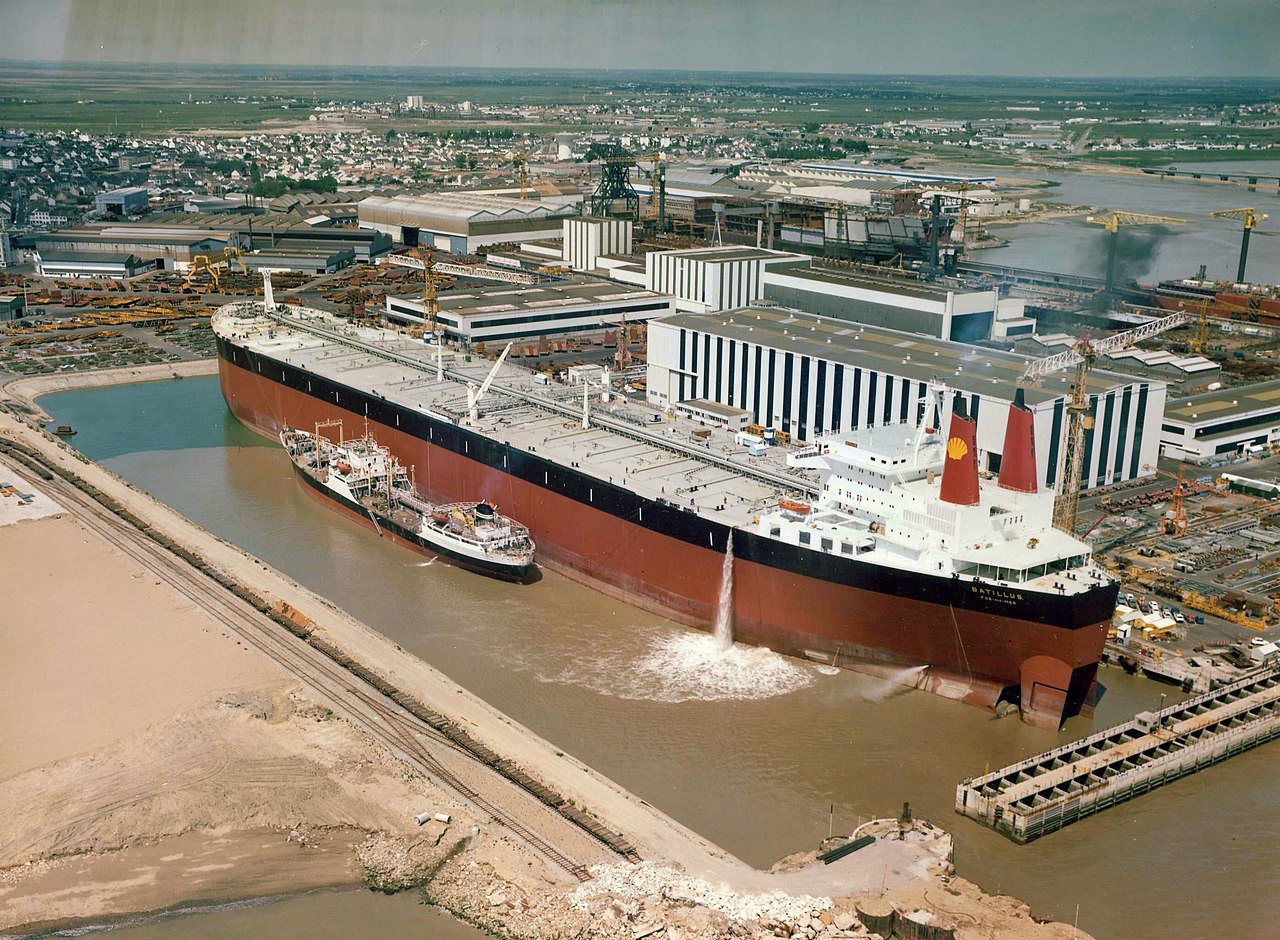
ULCC Batillus fitting out
Suez remained closed into the early 70s, and as the world's economy boomed, demand for oil grew. The result was a sustained increase in tanker rates, and a corresponding increase in orders for VLCCs and even larger ULCCs,3 vessels capable of carrying over 300,000 tons of oil. By early 1973, the situation was to the point of a flat-out bubble, with orders that year alone amounting to 50% of the industry's capacity. It all came crashing down that fall, when another war in the Middle East triggered a major oil crisis. As the price of oil skyrocketed, and demand plunged, the tanker market was faced with a huge glut of capacity. Vessels went straight from the builder to be laid up, and were scrapped years later, having never carried oil. Matters were made worse when Suez reopened in 1975, allowing vessels of up to 170,000 tons to take the short route to Europe. Despite this, vessels ordered during the boom years continued to be delivered as late as 1979.
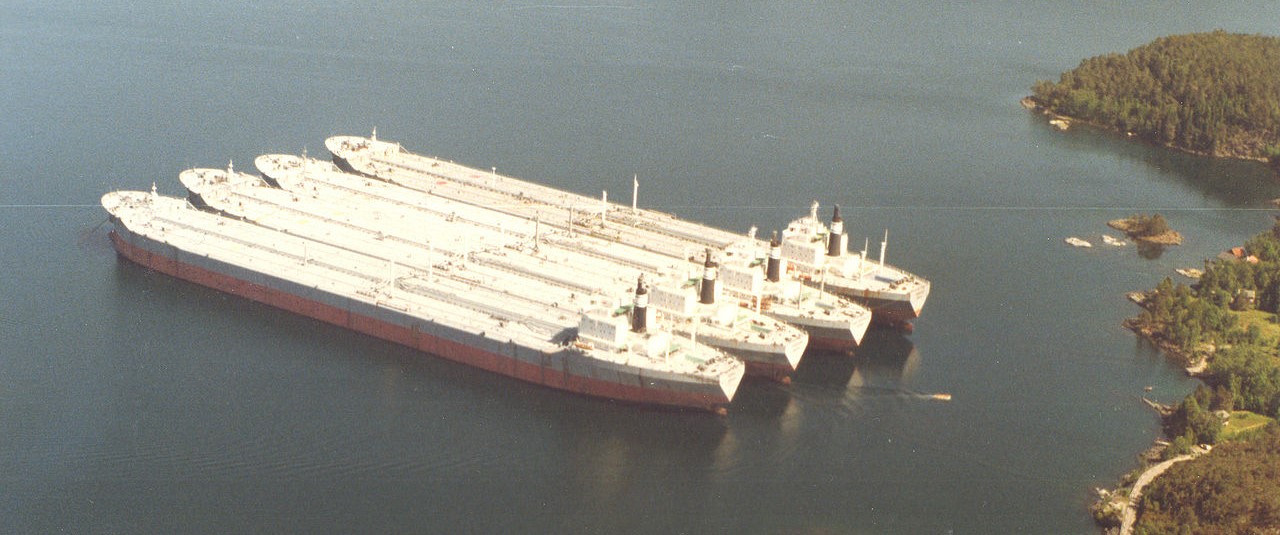
Laid-up supertankers
One of these was the ULCC Seawise Giant, by most measures the largest ship ever built. 1,504' long, displacing 646,642 tons fully loaded and capable of carrying 564,763 tons of oil, she drew too much water to pass through the English Channel. Seawise Giant had a checkered career, spending more of her time storing oil than transporting it. In 1988, while storing Iranian crude, she was bombed and sunk by the Iraqi Air Force, then salvaged for another 20 years of service before being scrapped in 2010. Since the 70s, only a handful of ULCCs have been built, and today all serve as floating storage tanks in support of offshore oil drilling.

Seawise Giant (bottom) in comparison to other large objects
Today, the tanker fleet has largely stabilized. Although overtaken by bulk carriers in overall size, oil tankers still make up a substantial fraction of the global merchant fleet. The biggest changes in the last three decades have been in safety, as spills like the Exxon Valdez led regulators to demand that new tankers be fitted with double hulls to better protect their cargo in the event of grounding or collision, and older single-hulled tankers be phased out by 2026. Other alternatives to reduce spillage have been proposed, although none have found wide favor.
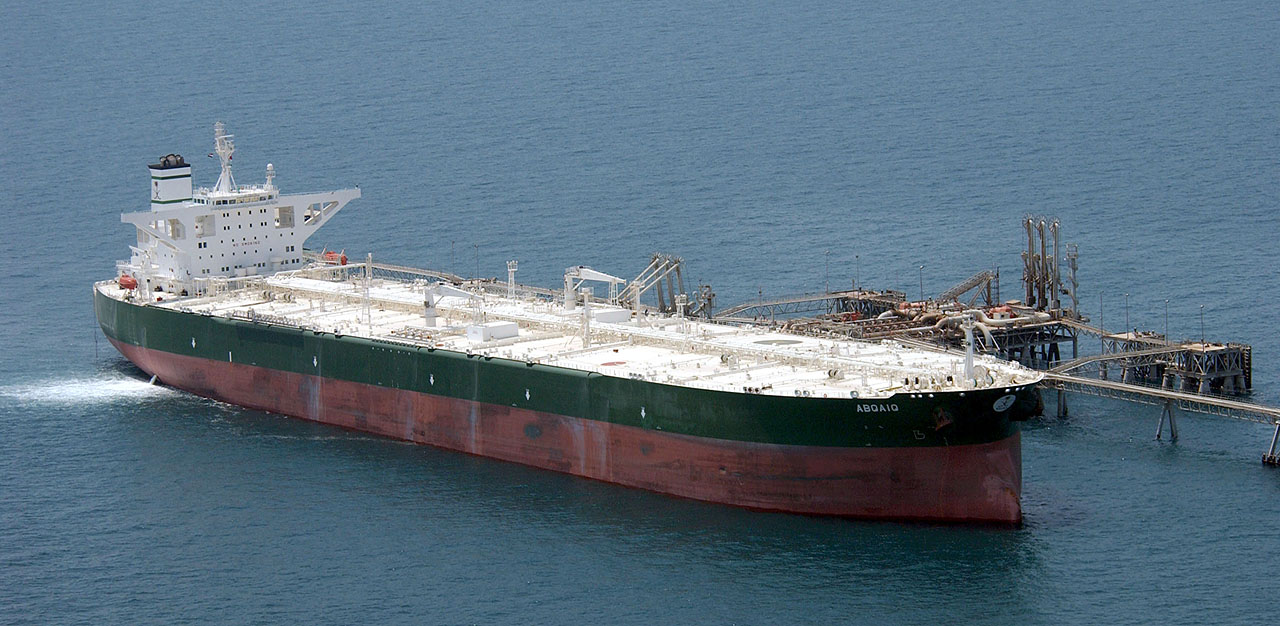
Modern tanker Abqaiq
While crude oil is the single most common commodity shipped across the world's oceans, it is not the only major petroleum product that has a specialized fleet of ships to transport it. Liquefied gasses are also traded extensively, and we'll look at the ships that do so next time.
1 All tonnages are deadweight (cargo capacity). ⇑
2 Kuwait to Rotterdam via Suez is 6,572 miles, while the Cape route is 11,418 miles. ⇑
3 Ultra-Large Crude Carriers ⇑

Comments
The first dedicated tankers were built in 1863, and were propelled entirely by sails. They were probably never used for bulk oil,
So what were they used for then?
The ended up converted to general cargo, although they did probably carry oil in cases.
Boy, the Glückauf was pretty in a weird way.
Is there a name for the raised poop and forecastle style ship, like the Herbert G Wylie there?
I'm curious how many petroleum products are shipped by tanker. I know the US is a net exported of refinery products, but I assume most go to Canada and Mexico.
I'm also amazed at how versatile at least the old tankers were, capable of pumping both gasoline and heavy fuel oil. I'd always assumed ships were pretty specialized.
Speaking of both tankers and the Jones act:
Herbert G Wylie is basically a 3-island design, with a forecastle, engines amidships, and a poop. I have yet to find a proper glossary on stuff like that.
I can't speak too much to the current market, either in general or in the current fluctuation. My sources on this are sadly outdated.
What's more surprising is multi-product pipelines. You just switch from pumping e.g. bunker oil to kerosene in at one end and make sure that everything at the interface gets put in a holding tank at the other end for reprocessing.